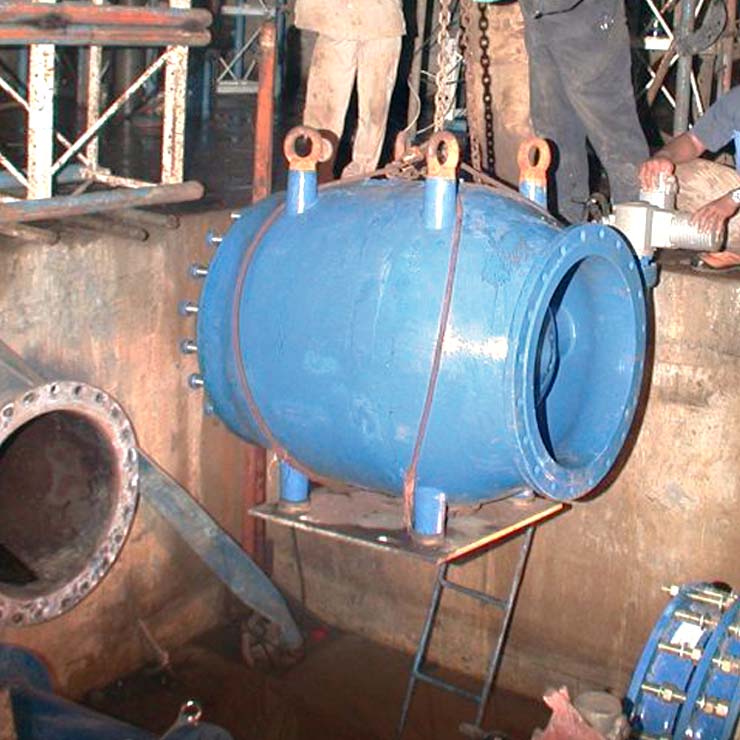
Country: Indonesia
Customer: University of Karlsruhe, Germany
Products: VAG EKN® Butterfly Valves, VAG RIKO® Plunger Valve
VAG valves supply water from the caves under the 'thousand hills'. Yogyakarta Special Province is one of the poorest areas of Java and Indonesia mainly because of the extreme lack of water. A dry season lasting several months and the craggy karst soil means that harvests are poor and drinking water scarce. In the 1980s, a ramified cave system with underground rivers was discovered 100 metres below the karst plateau. All that was needed was a sustainable way of exploiting the source.
A German-Indonesian cooperative was put in place in 2000. The goal of this interdisciplinary cooperation between researchers, scientists, corporations and institutes was to tap into and exploit the available water resource. This unique pilot project in the Gua Bribin cave was managed by Prof Dr Franz Nestmann together with Dr. Peter Oberle, project coordinator at IWG (Institute for Water and River Basin Management at the University of Karlsruhe). 'Over 1000 litres of water a second flow through the Gua Bribin cave even in the dry season. It’s the perfect place to build a dam,' explains Dr Peter Oberle from IWG.
But before the plan could be executed, the widely ramified cave system had to be studied and measured. And there were adventures with the indigenous fauna that needed to be lived. In December 2004, Herrenknecht completed the 100 metre long access tunnel it built with its new vertical boring machine. The work on the underground dam could finally begin. Progress was, however, slowed down considerably by events such as the catastrophic earthquake in 2006, floods and a rockfall. The work was finally completed in June 2008, and the site was ready for the VAG valves. The tension increased when the valves arrived at the entrance of the supply tunnel: 'Getting the valves into the tunnel was a challenge in itself', reports Werner Helm, the team's master-builder.
'The very heavy Plunger Valve had to be lowered 100 metres into the ground through the supply tunnel.' Once in place, a baseplate and bedplate with cement anchors were used to stabilize the VAG RIKO® Plunger Valve, which is equipped with an electronic AUMA control actuator that is powered by the electricity generated at the site. A venting system with DIN 250 venting port ensures the valve operates without cavitation. The water pressure now powers turbines that are connected by a drive to KSB feed pumps that press part of the water 200 metres up into a reservoir.
'The flood test at the end of June 2008 was the straw that could have broken the camel’s back,' says Dr. Peter Oberle. 'But it was successful! We know that the cave will hold the water and that we can achieve the required storage level of 15 metres.' The detailed scientific documentation of the extensive research and construction work is available at www.hoehlenbewirtschaftung.de.
'We're extremely happy this model project was completed successfully', says a happy Professor Nestmann. 'We can now apply what we learned to every karst region in the world, like Sri Lanka, Thailand and Laos.'
VAG-Group
Headquarters
Carl-Reuther-Str. 1
68305 Mannheim
Germany
Phone: +49 (621) 749 0
Fax: +49 (621) 749 2156
Enter your e-mail address and password to log in.